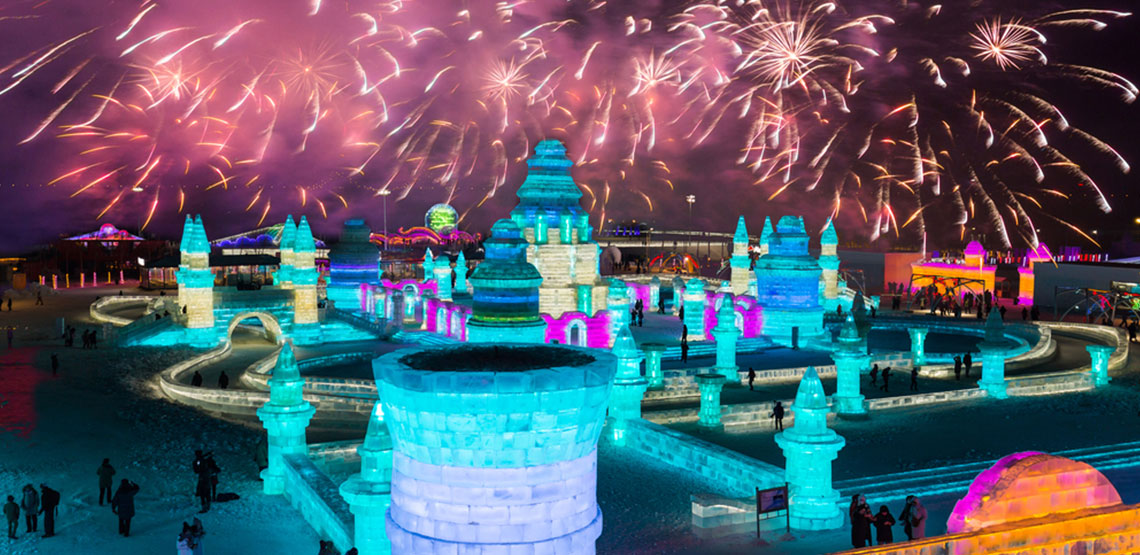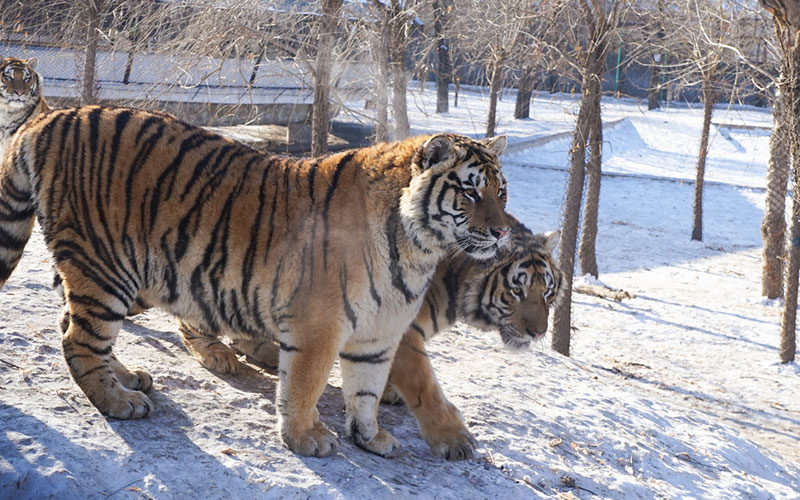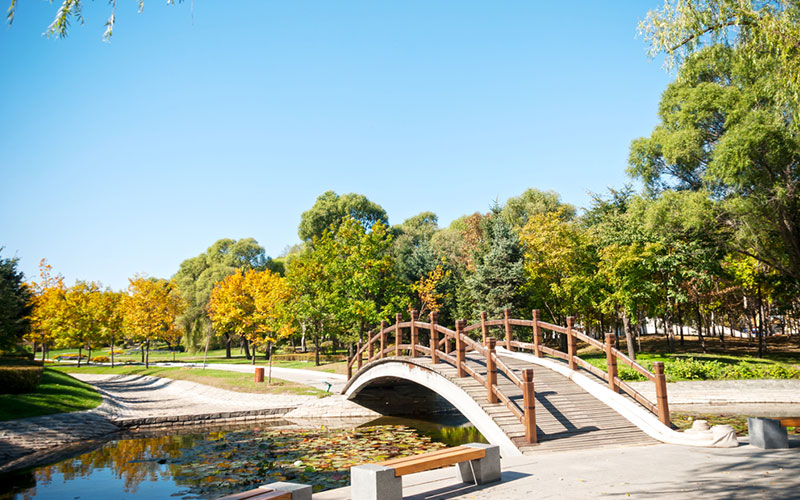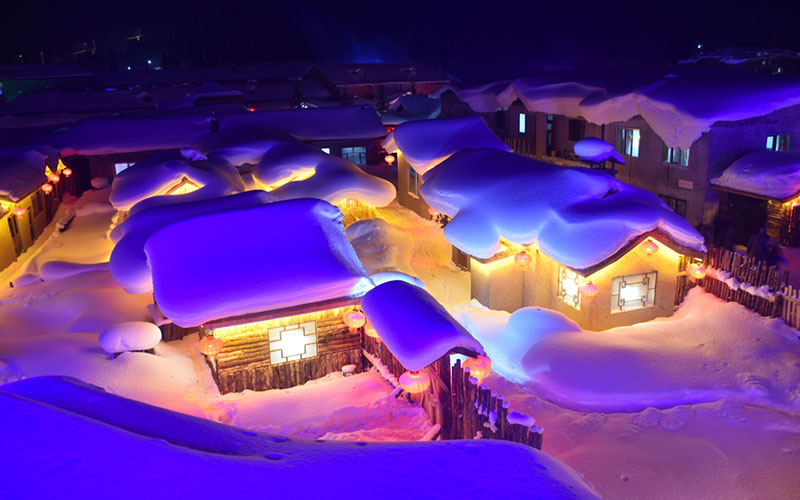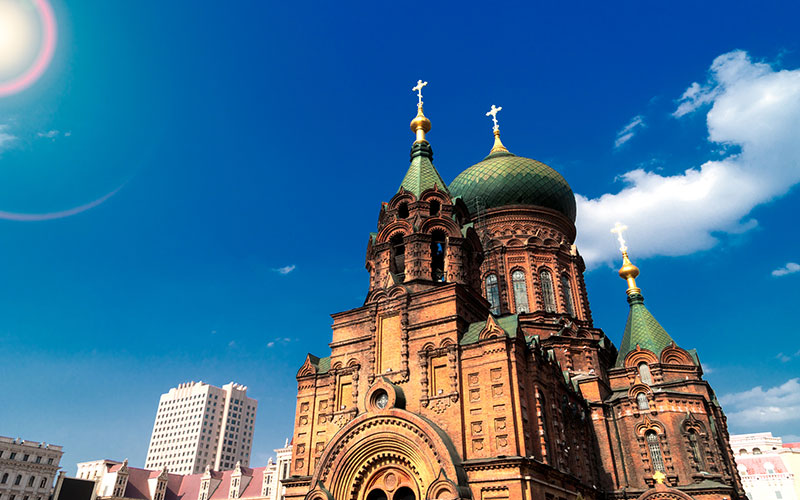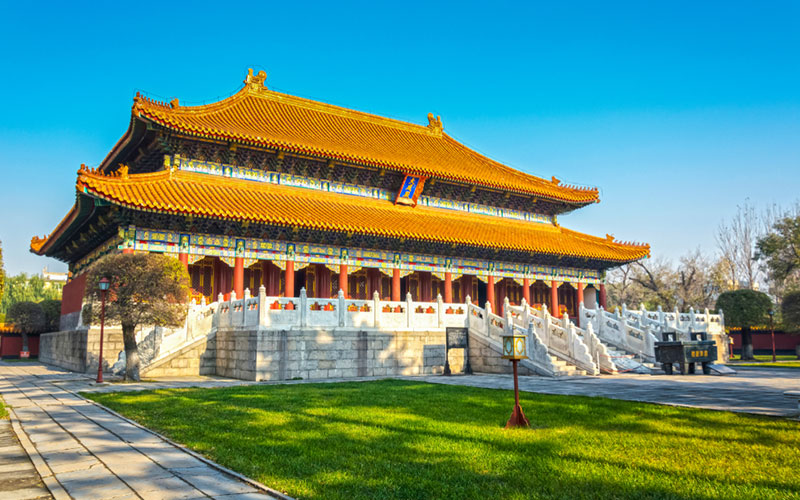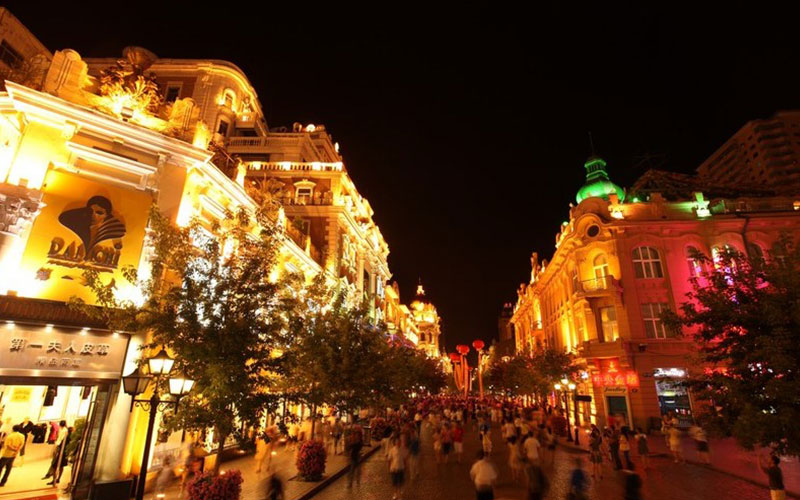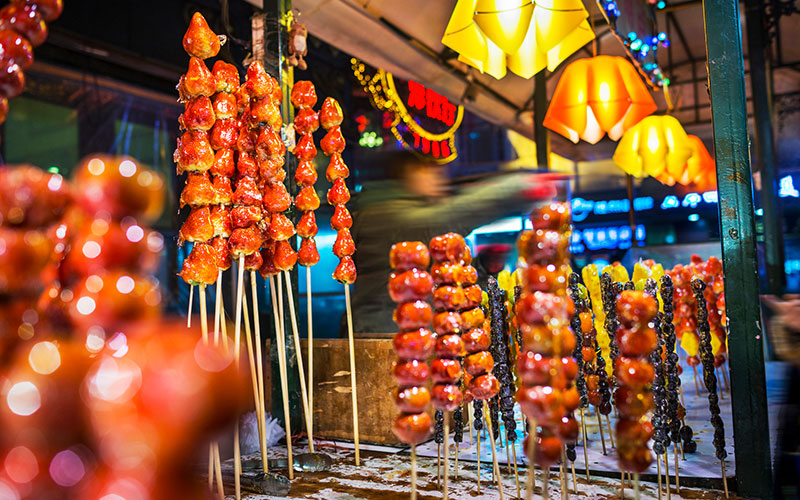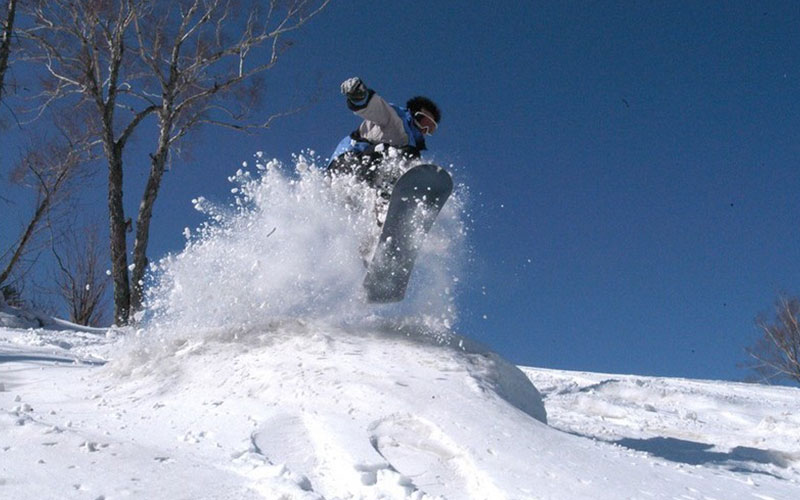Home to the world-famous Harbin International Ice and Snow Sculpture Festival, China’s “Ice City” attracts thousands of visitors from all over with its annual showcase of incredible snow sculptures, magical ice lanterns, and surreal wintry landscape.
With an average annual temperature of 3.6°C (38°F), Harbin is literally the coolest place in China. Heilongjiang, its capital, offers more than just a superlative ice festival. With an immensely rich culture, wild attractions, and natural beauty that transcends seasons, get ready to gear up for an experience like no other.
Blanketed in snow or thawing ‘neath summer skies, these five unique Harbin experiences will make you want to fly in any time of the year.
1. Wild, furry adventures
Would you rather witness the world's largest tiger devour its prey from just a few feet away, or contemplate the grace with which two 1000-pound polar bears aggressively play-fight? Whichever you pick, the power of these "wild encounters" will never let you forget your Harbin visit.
Harbin Siberian Tiger Park: The world’s largest natural park for Siberian tigers is home to 700 purebreds as well as other big cats such as white tigers, lions, lynxes, black pumas, leopards, some Bengali tigers and even a liger (a lion-tiger hybrid). With an estimated 300 Siberian tigers left in the wild (and only 12 of them in China), the park's efforts to breed this endangered species contribute greatly to the preservation of the largest surviving breed of tigers. You can buy a live duck, chicken, or even a cow, to feed to the 100 free-roaming wild Siberian tigers available for public viewing – definitely a sight not to be missed!
Harbin Polarland: Ten thousand Arctic and Pole ocean animals interact with visitors all year-round in China’s first arctic theme park. The choice is yours – dance with naughty seals, dive with penguins, make a wish in front of world-renowned beluga duo Mira and Nicola’s water rings, swim with ferocious sharks, meet arctic wolves and foxes, and of course, watch polar bears in awe.
2. Summer versus Winter
Summers in Harbin are short and cool, consisting of plenty of rainfall. With temperatures averaging at 20.8°C (69.4°F), the heat is definitely much more bearable as compared to its other neighbouring cities in inland China. Whatever the season, Harbin offers picturesque landscapes and unique charms that'll make you want to go back again and again.
Sun Island Park: This winter paradise transforms into a whole new world once the ice thaws: sparkling blue water, crystal lakes, wooden rockeries, deers and squirrels running on the lush greenery. No wonder it’s the choice summer escape (23°C or 73°F, on average) for locals and tourists alike. The Harbin Beer Festival, held in the park every August, outshines any Oktoberfest by its sheer scale.
Snow Village (aka Xuexiang): After a four-hour-drive up the mountain, you can explore this snow-capped village atop a horse, on a dog sled, or on skis. At night, neon lights and “snow curtains” (snow hanging from eaves to the ground) turn this town into a dreamlike fairyland. Imagine the photos you’ll capture out of this magical landscape.
3. Oriental Moscow
East meets West in the streets of Harbin, which hosted an influx of Russian immigrants in the 19th century during the construction of the eastern leg of the Trans-Siberian Railroad. With its architectural mix of century-old European and Asian structures, you can’t help but feel you’re in Moscow – or Paris, depending on where your feet take you – until a majestic Chinese temple reminds you that you are still in China. Immerse yourself in the city’s Eurasian culture at the following sites.
Saint Sophia Cathedral - This former Eastern Russian Orthodox church – the largest in the Far East – boasts a Neo-Byzantine architecture that mirrors the splendour of Red Square but evokes the spirit of Venetian basilicas and French cathedrals. After massive restorations in the 1990s, this Key Cultural Relic was reborn as the Harbin Architectural Art Gallery.
Stalin Park: Built in 1953, this riverside park is a beautiful landscape evidence of the friendship between the two then most powerful Communist nations, USSR and China. In winter, the Songhua river transforms this popular weekend spot into an ice sports centre. But for the rest of the year, the park offers a summer beach vibe.
Confucius Temple: Built in 1926, the largest Confucian temple in northeastern China exemplifies Qing Dynasty-style architecture and landscape: the temple’s symmetrical structure consists of three courtyards dotted with old trees and rare flowers. Due to its likeness to the Imperial Palace, it has earned the moniker “the Forbidden City of Harbin”.
Zhongyang Pedestrian Street - This long, cobblestoned corridor of European architectural art (including Byzantine, Baroque and Renaissance) is considered as one of the prettiest streets in Asia. In winter, stunning ice sculptures sitting on the street provide a lovely distraction to pedestrians scouring this shopping mecca for Russian furs and leather, French perfumes, English wool, Japanese cotton cloths, German medicine, Swiss timepieces, and various exotic products.
4. Exotic Harbin street food
Harbin's streets are something to explore. After all, be it windy spring, cool summer, or frost-nipped autumn, there are tasty treats to try around every bend. Local fares carry the palpable influence of Manchu, Shandong, Heilongjiang and Russian cuisines. But for us, you should make the most of these four Harbin street snacks while in town.
Dalieba and Hongchang: Russian-style bread and smoked red sausage (unique to Harbin) are Harbin staples that are also deemed as choice gifts for family and friends.
Madieer Ice Cream: Savoury, sweet and milky, the Madieer Ice Cream is equally popular in the summer and winter seasons. Choose from eight flavours, with good old vanilla being the best seller.
Candied fruit (Bingtang hulu): Bamboo-skewered fruit coated in hard candy syrup are exclusive to the winter season. An absolute must-try for sweet tooths!
5. Year-round skiing
With its lengthy skiing season, Harbin is one of the best spots in Asia for slope babies. While it already boasts of having the biggest and greatest ski resorts in China with Yabuli Ski Resort, the city exceeds itself in 2017 with the opening of Harbin Wanda City, the world’s largest indoor ski resort. Now, you don’t have to wait for winter to fly and enjoy downhill skiing in "Ice City".
Harbin is “Narnia come to life” whenever winter comes. The next time you fly in, go beyond braving the cold. Look beyond its frozen wonders and discover the equally magical pleasure of exploring this “Ice City’s” exotic Eurasian heritage and summer delights under clear, blue skies.
Shop before you fly!
Shop 30 days in advance and up to 12 hours before your flight at the comfort of your own home. Plus, enjoy tax and duty-free prices and online-exclusive offers. Shop now at iShopChangi!
Be rewarded when you shop at Changi!
Leap into a world of exclusive privileges as a Changi Rewards member. Enjoy GST-absorption for your purchases at participating outlets in the public areas of the airport and more. Sign up for the FREE membership here.
WiFi routers, travel insurance, attraction tickets and more!
Specially curated to meet your travelling needs, Changi Recommends offers an extensive range of travel necessities such as WiFi routers, travel insurance and more to help you get ready for your holiday. Shop now at Changi Recommends!
Best time to visit
The best time to visit Harbin is between December and February. The Harbin International Ice and Snow Festival takes place in winter where temperatures can go below -20°C (-4°F). You may also choose to visit Harbin for a cooling summer, where the average temperature of 20.8°C (69.4°F) is much lower than other cities in inland China.
Transportation
The most convenient way of travelling around Harbin is by bus. The cost for a public bus ticket is typically 1 or 2RMB per ticket. Alternatively, the taxi is also an inexpensive way to save time. Usually, the flag down price is 8 or 9RMB for the first three kilometres, and then no more than 2RMB for every additional kilometre.
Currency
China’s currency is the Chinese Renminbi (RMB for short). Most places only accept credit cards issued by Chinese banks.
Book Now
Flights to Harbin via Scoot are available three times a week from Changi Airport. Search for airfare deals and book your tickets now!



